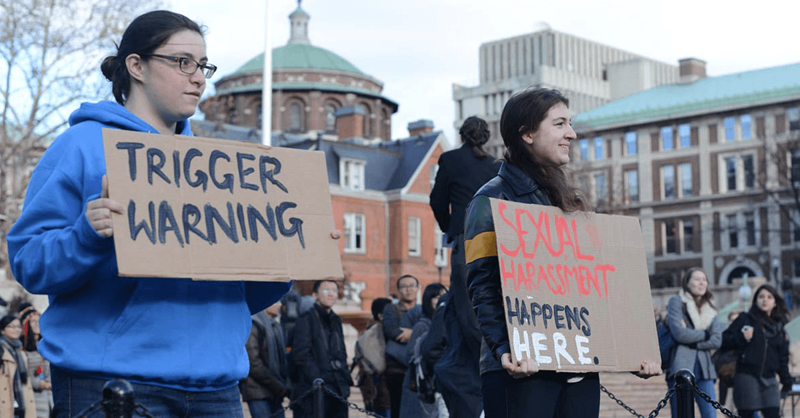In Signs journal, Jack Halberstam wades into the controversy surrounding triggers warnings, especially in relation to college course material. After a nuanced exploration of both sides of the issue, Halberstam ultimately comes out against trigger warnings: “It is for this reason that we must oppose the trigger warning—not because we want the right to show any and all materials whenever we want but because it gives rise to an understanding of self that makes us vulnerable to paternalistic modes of protection.” Here’s a longer excerpt from earlier in the piece:
In a media landscape dotted with warnings about explicit lyrics, violent imagery, raunchy humor, and nudity, what makes a trigger warning inflammatory? Unlike the content warning, the trigger warning is not limited to cautioning a general audience about what they are about to watch. The trigger warning, on the contrary, presumes and to a certain extent produces putative viewers or listeners who want to know what is to come in class or online because they fear their reaction to such material and wish either to mentally prepare to engage with it or to avoid it altogether. The trigger warning, in other words, believes in a student or viewer who is unstable and damaged and could at any moment collapse into crisis. And the fact that these calls for content warnings come at a time when college campuses are paying much more attention to students with disabilities could be muddying the waters around what constitutes posttraumatic stress disorder, what kinds of allowances should and must be made in any given classroom for students with disabilities, but also at a time when we are beginning to question the desire to diagnose every neurotic symptom…
this is in general the problem with standoffs between the trigger warning refusers and the trigger warning demanders. The refuseniks cast diverse student populations as monochromatic groups of spoiled children who have been sheltered and pampered, protected and coddled. The trigger-happy folks, on the other hand, fail to account for vast discrepancies within and among student bodies and they mark sexual violence in particular as the most damaging and the most common cause of trauma among students. Both sides ignore the differences between and among students, and all fail to account for the differences that race and class make to experiences with trauma, expectations around protection, and exposure to troubling materials.
